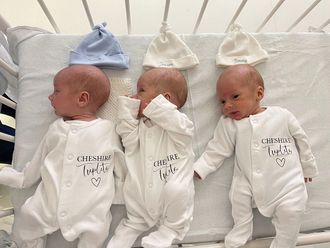
While breastfeeding provides babies with all the nutrients they need for healthy growth and development, whether you’re a new mother or a seasoned parent it often comes with its fair share of concerns.
The good news is that giving birth and breastfeeding is actually thought to reduce your risk of developing breast cancer: The months of pregnancy and breastfeeding decrease the number of menstrual cycles that a woman has in her lifetime, thus reducing her life-time exposure to the hormone oestrogen, which can promote breast cancer cell growth. But despite this there is a 3% of women who develop breast cancer while they are breastfeeding, making it rare but not impossible. As early detection of breast cancer increases the chances for successful treatment, how can you stay vigilant and keep checking yourself when that part of your body has changed so dramatically?
It is, after all, quite normal for breastfeeding women to feel lumps in their breast and they are rarely a result of breast cancer. Some of the most common conditions that can cause lumps while breastfeeding include mastitis (an infection of the breast tissue caused by bacteria or a blocked milk duct), abscesses (a rare but dangerous complication of untreated mastitis), fibroadenomas (noncancerous tumors that can develop in the breast) and cysts (known as galactoceles, these small lumps contain milk and often disappear once lactation is complete).
It’s useful to note that with mastitis or an abscess there’s localized pain and redness and you’ll likely have a fever. Although the appearance of lumps during breastfeeding is common and not a big concern, women should immediately consult their doctor if a breast lump does not go away, continues to grow, is fixed and hard to the touch or causes dimpled skin.
It’s useful to note that with mastitis or an abscess there’s localized pain and redness and you’ll likely have a fever. Although the appearance of lumps during breastfeeding is common and not a big concern, women should immediately consult their doctor if a breast lump does not go away, continues to grow, is fixed and hard to the touch or causes dimpled skin.
What happens if you do find a persistent lump?
A mammogram or an ultrasound provides images of the lump and helps your doctor determine if the mass looks suspicious. This may also be followed with a biopsy, which involves removing a small sample from the lump to test for cancer. If a woman is diagnosed with breast cancer while lactating, in most cases, the doctor will recommend she stops breastfeeding because many breast cancer treatments can affect a woman's milk supply or negatively impact the baby. The doctor will help to determine which treatment is best for an individual with breast cancer, as this can vary from person to person.
The doctor will also help patients decide which treatments are best as per the pregnancy stage and condition, these include:
Surgery: Surgery may be necessary to remove a lump or cancerous growth. In some cases, this can involve a mastectomy (removal of the breast) or a double mastectomy (removal of both breasts). The extent of the surgery will determine whether or not the individual can continue breastfeeding.
Chemotherapy: Chemotherapy uses strong medications to destroy cancer cells within the body. Women who are having chemotherapy will need to stop breastfeeding.
Radiation: Some women undergoing radiation treatment may be able to continue breastfeeding, depending on the specific type of therapy. A doctor will be able to explain the risks to allow the individual to make an informed decision.
Of course, a breast cancer diagnosis is devastating and particularly stressful for a lactating mother and her baby. If diagnosed be sure to seek out both emotional and physical support, ideally from a trained caretaker or nurse from a service like manzilhealth, who can extend the best of care and support for both you and baby.








